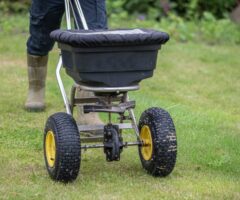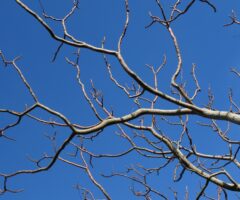Planting trees is planning for the future, so it’s important to care for those trees, especially during the first 5 to 10 years after the tree is planted. One of the ways to do that is to ensure that you limb up trees or have them properly pruned. Not only will this help to guide the structure of the tree, but it will improve the tree’s general health and well-being.
In this article, we will cover pruning the lower branches of a tree, sometimes referred to as “raising up” or “limbing up” a tree.
Continue reading to learn when and how to schedule this type of pruning, as well as why we recommend this practice to ensure the health and longevity of your trees.
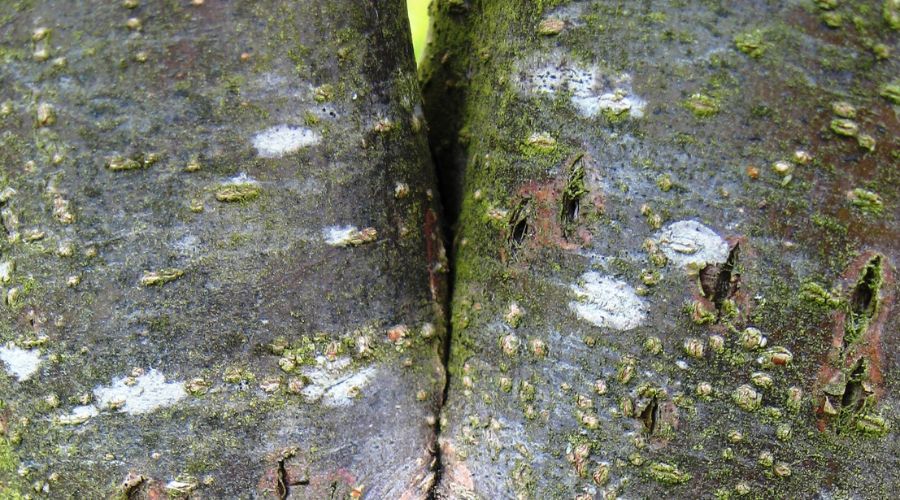
Why Should the Lower Branches of Trees be Pruned?
There are a variety of reasons to “limb up” a tree through proper pruning methods.
Proper Pruning Can Provide Access Under a Tree
Did you know? A tree branch that is 4 feet from the ground will always be 4 feet from the ground, no matter how tall the mature tree grows.
Now that you know this, the main reason to prune off some of the lower branches of a tree is that, eventually, you will not want to have those limbs so low.
Pruning off some of the lower branches can provide clearance under the tree for lawnmowers, pedestrians, or vehicles.
Lower branches of a tree may obscure signs, lights, or views of a busy street. Removing them not only improves the permanent tree structure, but can prevent issues from limbs or branches obscuring views.
Proper Pruning can Prevent Large Tree Wounds
If you are keeping up with tree pruning or trimming, the largest cut that should be made is 3 to 4 inches in diameter, or on a branch about the diameter of a baseball bat.
Waiting too long and letting the limbs get too large leads to large cuts. These large pruning cuts increase the risk of long-term problems like heartwood decay.
If these large branches are pruned when the tree is older and the branches have a diameter of more than half the trunk’s diameter, the pruning cuts can leave a large pruning wound. Pruning the branches when they are smaller can minimize the size of the pruning wounds.
If making large cuts is discussed, there is usually good reason, such as a limb in danger of falling. In some cases, it can be best to leave a large branch as is and work around it.
The damage that can occur from large branches may not manifest for years or decades, but in the life of trees, years or decades can be a relatively short amount of time.
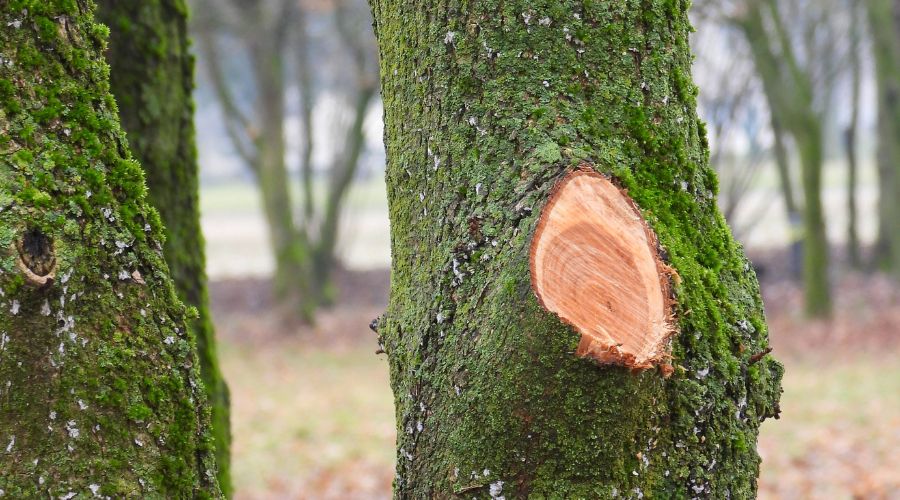
Proper Pruning Can Prevent Codominant Stems
Another reason to prune off some of the lower branches of a tree is to prevent codominant stems. Codominant stems lead to a weaker tree structure.
The term “codominant stems” means that your tree has more than one “leader,” or trunk. If your tree has a trunk that then splits into two or more branches of equal size, they are two stems. This V shape often leads to trees splitting as they grow and are exposed to storms, winds, and other events.
Thanks to codominant stems with a V-shaped union, they can develop “included bark” between those two stems. This is often how a crack is formed, which eventually leads to the tree splitting apart.
When caught and corrected in young trees, codominant stems can be pruned and future tree splitting can be prevented.
Proper Pruning Can Help in Other Areas
Other reasons for limbing up a tree may include an unbalanced canopy (making the tree more likely to break or fall), or to provide access to the area around the tree.
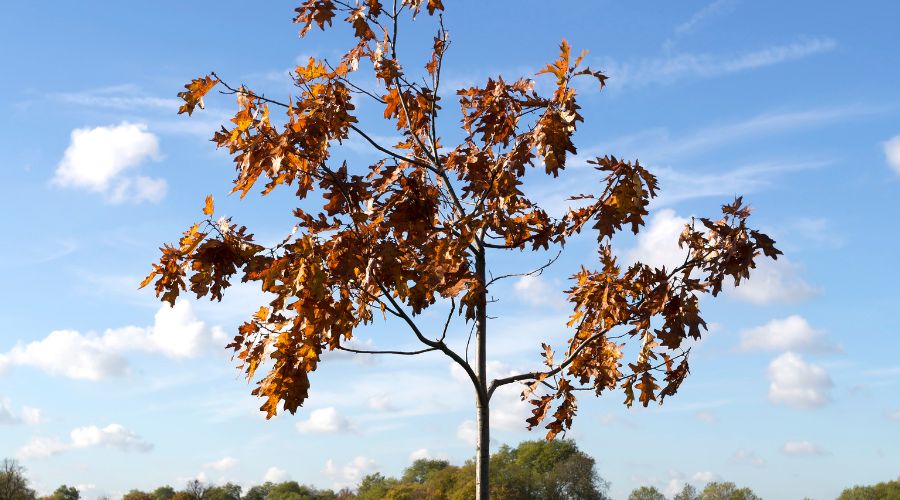
When Should the Lower Branches of Trees be Pruned?
Consider the Age of the Tree
Young, newly-planted trees are working to establish their root systems and start the growing process, so we don’t recommend pruning trees for the first two to three years after planting a tree.
After that, however, the pruning process should begin before a tree grows too large, especially if you notice issues such as codominant stems.
This is especially important for trees that have a large mature size. Pruning them when they are young and manageable can make a big difference in the health and structure of trees in the future.
Don’t be in too much of a hurry though. It is best to maintain a 1/3 truck to a 2/3 top ratio for both appearance and future growth.
Some tree species have a tendency to need more structural pruning and should be revisited more often.
Consider the Time of the Year
Trees can be pruned at any time, but we recommend dormant pruning whenever possible. Dormancy is the time between when leaves have fallen from deciduous trees and before new buds begin to appear in the spring.
Pruning from late fall, during the winter, or into early spring is preferable because the leaves are off deciduous trees, making access to the tree branches easier. The lack of leaves also allows us to view the overall structure of the tree more easily.
Additionally, tree pests and diseases are less likely to spread during the dormant season, which gives pruned trees time to heal before opportunistic tree pests return. Oak and elms in particular should be pruned during the dormant season to prevent the spread of diseases such as oak wilt and Dutch elm disease.
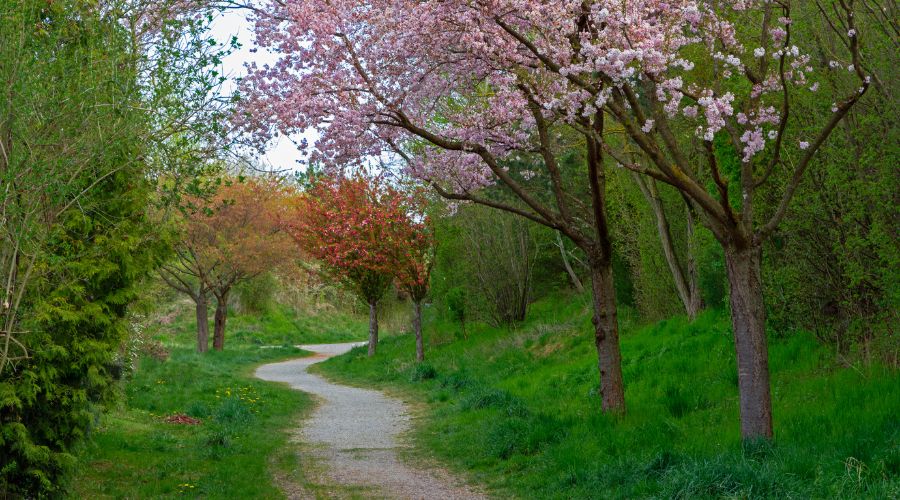
Pruning the lower branches of trees can provide clearance to areas such as walkways and trails.
Can You Limb Up Trees Yourself?
We recommend the use of a professional whenever possible when pruning your trees. Incorrect pruning can harm a tree, and if too much of a tree is pruned, the tree is not able to produce enough leaves for photosynthesis. This leads to weak trees, which are more susceptible to other issues and may have problems in the future.
Contact Bay Landscaping for Your Dormant Pruning Needs
If you have a tree that may benefit from this type of pruning, contact Bay Landscaping. We can take a look at your tree, advise if pruning is needed, and add you to our pruning schedule.
Pruning is a process, and maintaining the pruning over the years is important. Our Landscape Maintenance service includes ornamental tree pruning, as well as pruning and shaping for shrubs.
Please contact Bay Landscaping for more information.





